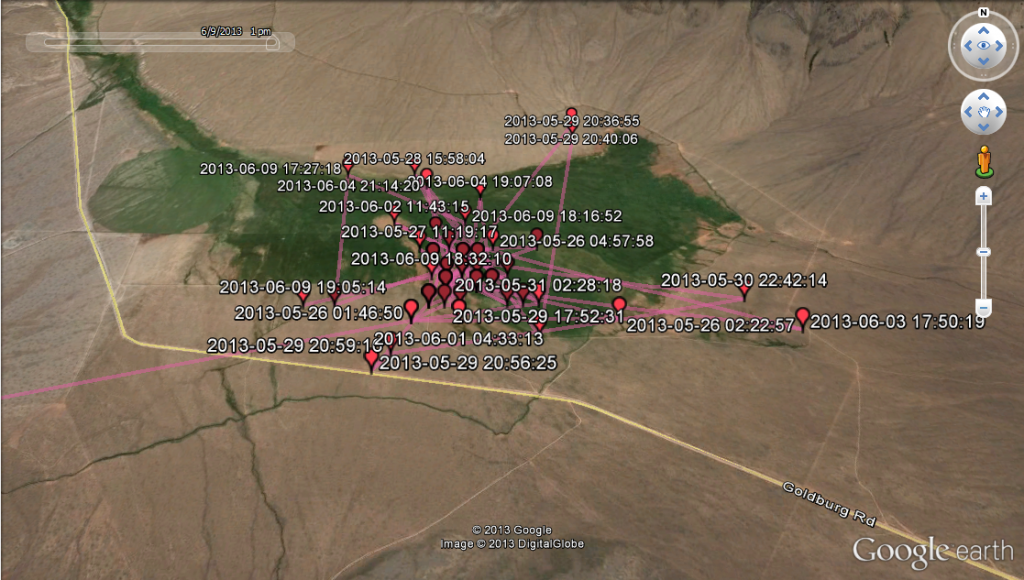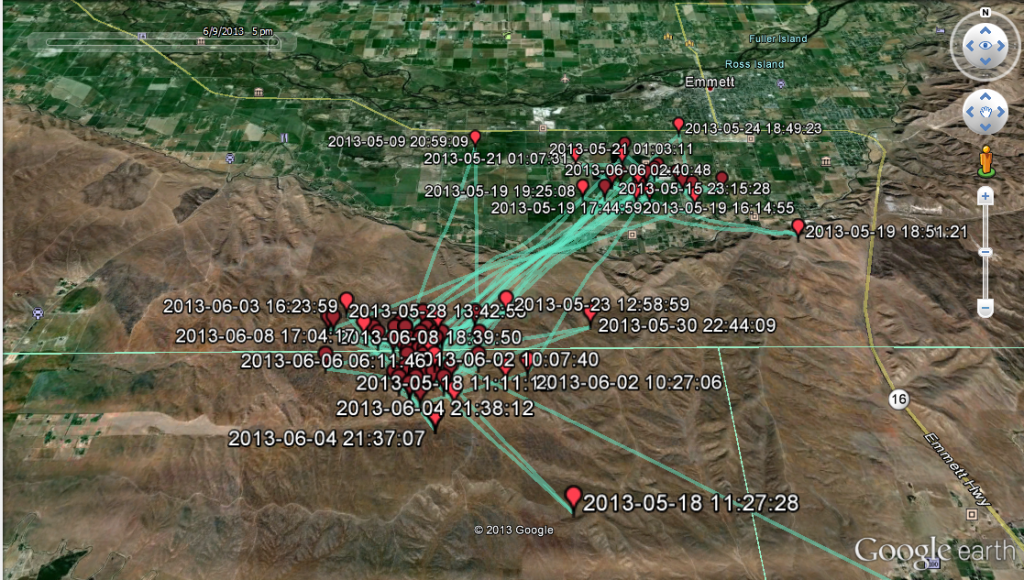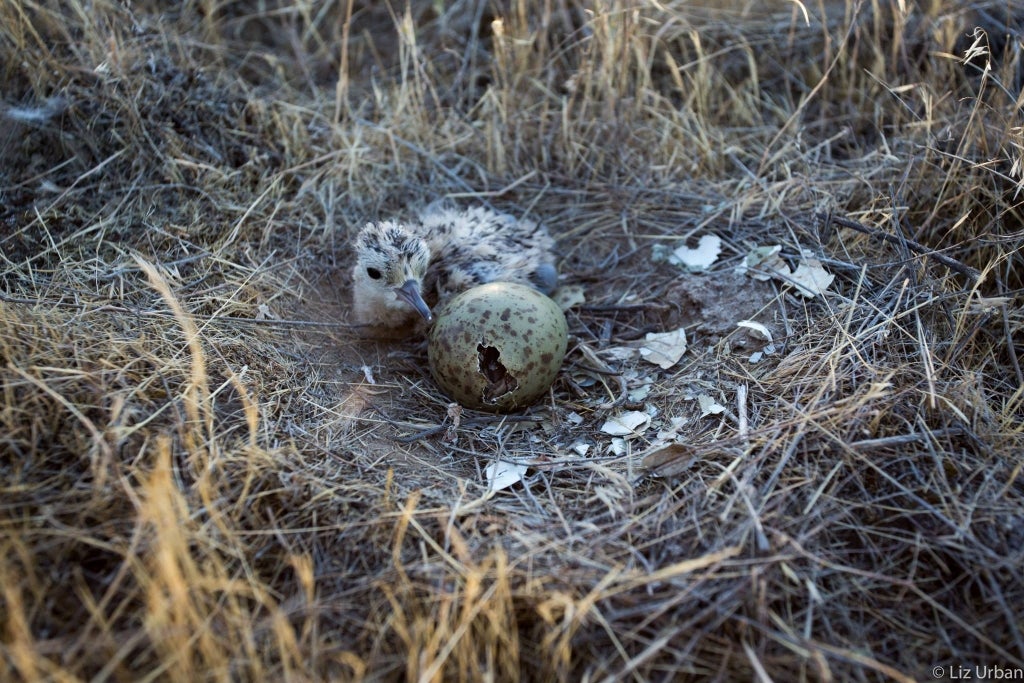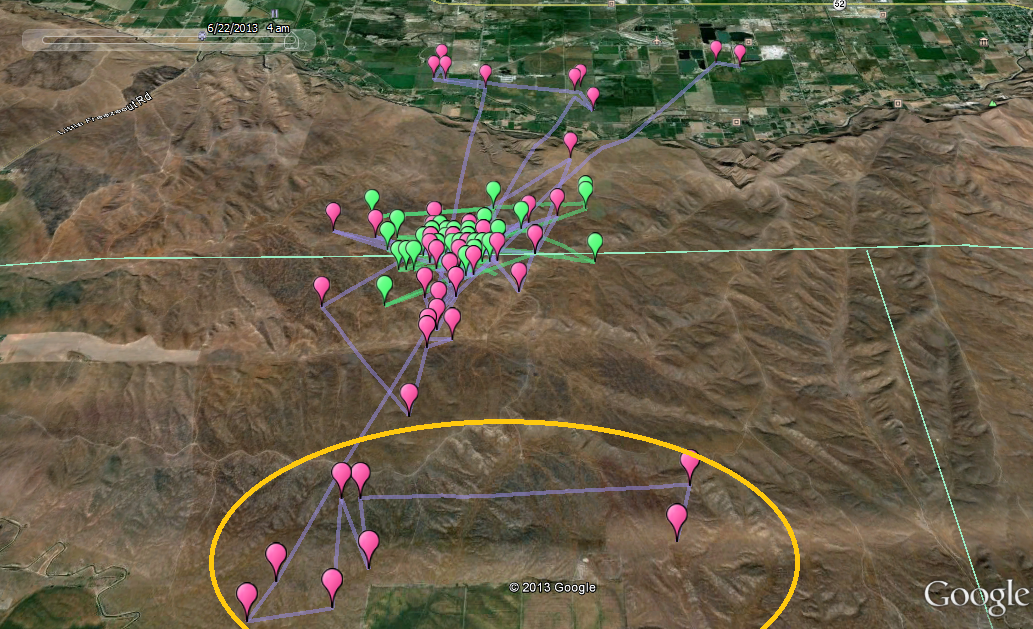Over the past few weeks, we have been learning a lot about our Curlews and their behavior. Here are a few maps that show some interesting data about our birds:
Habitat differences
Here you can see maps from two of our birds, Borah and Ada.
Borah lives on Big Creek Ranch in the Pahsimeroi valley. You can see based on his map that he rarely leaves his nest area, and has traveled a maximum of 1 mile from his nest.

Ada, on the other hand is nesting in the Area of Critical Environmental Concern (ACEC) near Emmett Idaho. While incubating, she made long journeys between her nest and agricultural fields, where she fed in the evenings while not sitting on the nest. She made journeys of up to 4 miles one-way to feed! *note: this map only shows Ada’s movements before the chicks hatched.

While we haven’t done actual assessments to compare their nesting habitats, we hypothesize that these movement differences are due to the fact that Borah has more food available to him close to his nest, whereas Ada had to travel much farther to find good foraging habitat. (Before he died, ‘Carl’ also did similar long-distance foraging trips from the ACEC to farm fields, so we don’t think these differences are related to the sex of the bird).
Parenting Differences
We have also observed some parenting differences between our pair Ada and Emmett. A few weeks ago, their chicks hatched, and Liz was lucky enough to observe them just a few hours out of the egg!

Once their chicks hatched, their movements changed. Emmett is the dedicated dad, never leaving the chicks and staying near the nesting area. Ada stayed with the family at first, but made a few trips out to feed in agriculture fields during the week. Her most recent movements show that she has moved to a completely different area of the ACEC and has left Emmett with the parenting duties. This matches up well with what we know about Curlews, since females usually stay with the chicks for 1-3 weeks before leaving the males to continue raising them. Emmett will guard them from predators and guide them to good feeding areas until the chicks eventually fledge and go off on their own at the end of the summer.
Here is a map of their locations since the chicks hatched, showing Emmett’s movements in green, and Ada’s in purple. The yellow circle shows Ada’s most recent locations over the last few days.

We are excited to see what else we can learn about these birds on their breeding grounds, before they take off on their exciting migration journeys!
P.S.
Have you checked out our new Curlew info page yet?
We created a “profile page” for each of the birds, with some info about them and some fun facts. This page will give you the inside scoop on all our Curlews’ names, and how they got them.